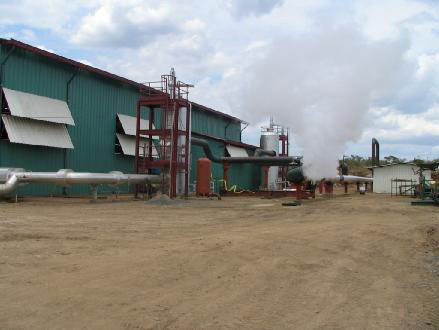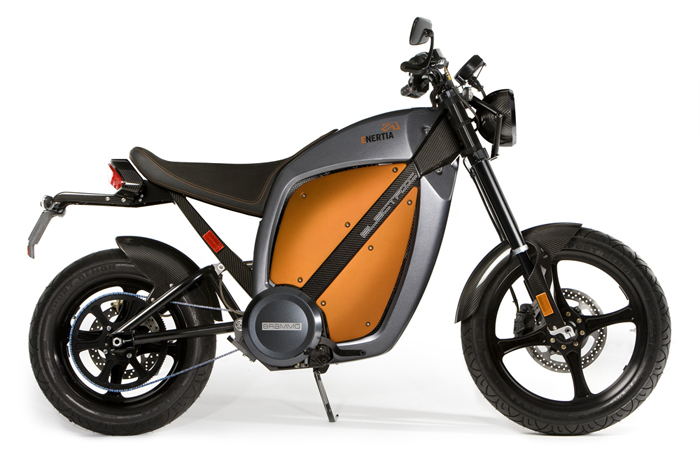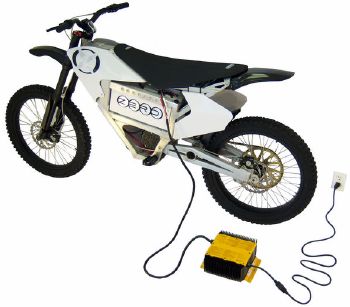Blog Archives
Polaris Reports: Inside the Numbers

Photo Credit: Polaris Geothermal
Polaris Geothermal recently reported full results for the year 2007. A detailed press release about the earnings is available here. The high points: The company got a full year of production from the Phase I of its plant in San Jacinto-Tizate, Nicaragua at around 7MWe of average output, the drilling program continued to grow Phase I to its planned 34MW target, and the full 72MW of production appears to be on track for the 2010 timeframe.
The low lights involved a question about the validity of the concession from the Nicaraguan government which was resolved and accelerating losses, the net loss rate for the company increased nearly $2M to $6.7M on the year. Shareholder concerns about Polaris have to revolve around project finance where additional dilution and access to debt financing will present distinct challenges going forward.
Rather than making this a straight financial story, one of the things that struck us about this release was the transparency of the operational aspect of the SJC plant. We applaud Polaris for disclosing this information and believe since it is there, at least at this plant on this project, we can see some of the real cost and benefit of geothermal plant operations.
In 2007 the SJC plant produced 64,778 MWh of power accounting for $3.9M in power sales and $0.7M in carbon credit sales for a grand total of $4.6M of revenue for the project. Plant operations expenses totaled $2.2M yielding a gross margin of $2.4M for the project at an average output of 7.37MW per month. Hidden in these numbers are outages of over a week in June which cost the company approximately 1,000 MWh of sales.
We can reverse engineer that the company is being compensated $10.80 per MWh for carbon credits and $60.20 per MWh for power sales against operations cost of $34 per MWh. As the project grows to 34MW and finally tops out at its planned 72MW, these numbers should improve as the plant operations costs won’t scale in a linear fashion relative to output due to economies of scale (after all, the operations infrastructure is in place now, operations cost will increase but the slope should be pretty flat.)
NCPA, an operator at the Geysers, sees operations costs of about $19 per MWh at 132MW of output. It seems reasonable to believe that Polaris could achieve that level of efficiency over time, but even if the SJC project split the difference and only improved to $26.50/MWh, there would still be interesting impacts on the bottom line.
If nothing changes except capacity and output, at a 34MW and present availability and capacity factor, the company would bring in $13.2M in power sales and $2.4M in carbon credits balanced against $7.5M in plant operations producing a pre-tax, pre-corporate expense run rate net of $8.1M. If the company was able to hit the $26.50/MWh operational improvement, that would result in a $1.7M increase to $9.8M.
At 72MW and current operational levels and assumptions, the project is a real money machine producing $28M in power sales and $5M in carbon credits against operational expense of $15.8M. With numbers this attractive, why isn’t everyone building geothermal plants? The answer lies in the development expense. Effectively, the lifetime cost of production is incurred upfront and then amortized over the lifetime of the project. Therein lies the rub, the development cost per MW of output is in the $3.2M range presently meaning to reach 72MW Polaris will likely have spent $230M developing the plant.
It’s always nice to see real numbers, thank you for disclosing Polaris and we wish you well as you build your SJC project out to scale.
US Geothermal Acquires Empire Plant

Photo Credit: UNR
US Geothermal, developer and operator of the Raft River project in Idaho, announced their intent to acquire the assets of Empire Geothermal consisting of a 4.8MW (nameplate) binary plant and over 28,000 acres of land for $16.6M. The transaction details are complex, the press release goes into detail about how the deal is structured and the timing of the transaction.
The plant has been in operation since 1987 and consists of 4, 1.2MW binary units and a cooling tower arrangement. The average output of the plant has been in the 3MW range for sometime with the plant producing approximately 35,000 MWh gross and selling ~25,000 MWh in 2006. The difference in the gross and net loads are accounted for in the operation of the binary plant (pumping of fluids primarily for cooling and reinjection.)
The land in question consists of the San Emidio Desert (22k acres plus the plant) and Granite Creek near Gerlach, Nevada. USG estimates they can boost the output of the Empire plant to 10MW with the new technology available since 1987 and potentially develop up to a 40 MW plant across the other prospects.
Enertia Electric Motorcycle

Photo Credit: Enertia
Another electric motorcycle that has come to our attention is the Enertia, a 280lb vehicle with a range of 45 miles on a single charge. It’s estimated to cost around $0.01 per mile to operate in electric cost and if used 100% for commuting can reduce green house gas emission by an order of magnitude over an average CAFE emission vehicle.
The top speed of the bike is 50mph and the performance is decent accelerating from 0 to 30mph in 3.8 seconds. The battery storage system is an array of lithium phosphate batteries designed to resist thermal stress. The system is designed to operate for 35,000 miles of operation.
Here’s the rub, the base model is available for $11,995 starting at the end of this year and with options the price can accelerate to nearly $15,000. It’s certainly an interesting option, but with a high cost of acquisition.
Comments are off for this post
PGE Secures up to 900MW Solar Thermal

Image Credit: BrightSource Energy
Today, BrightSource Energy and PG&E signed an agreement for the utility to take delivery of and distribute 500MWe of electricity from 3 proposed solar thermal plants in California. Power delivery could begin as early as 2011 and when fully online, the project is anticipated to deliver up to 1.2GWh of power per year into the grid.
Options for 400MW more power exist in the contract and that could push generation to over 2GWh per year from the aggregated projects.
Comments are off for this post
One Hot Bike

Scotts Valley, California based Zero Motorcycles is now shipping an all-electric 250cc equivalent motorcycle for a list price of $7,450 complete. These nifty little bikes are available in on- and off-road configurations and really fly (check out the videos hosted at their website.) The standard configuration has a duration of 2 hours and/or range of 40 miles and accelerates from zero to 30mph in less than 2 seconds.
Some interesting and distinguishing characteristics about this offering are the programmable interface allowing for different personalities to be exhibited from easy to sport. This is critical because the bike has 100% of torque available throughout the power range and is capable of delivering 300A at peak power. The storage system consists of an array of 168 second generation lithium-ion cells designed to avoid thermal incidents seen in other electric vehicles. The entire bike weighs only 140lbs (without the rider) and has successfully made 65 foot jumps, so it’s sufficiently tough for the task at hand.








